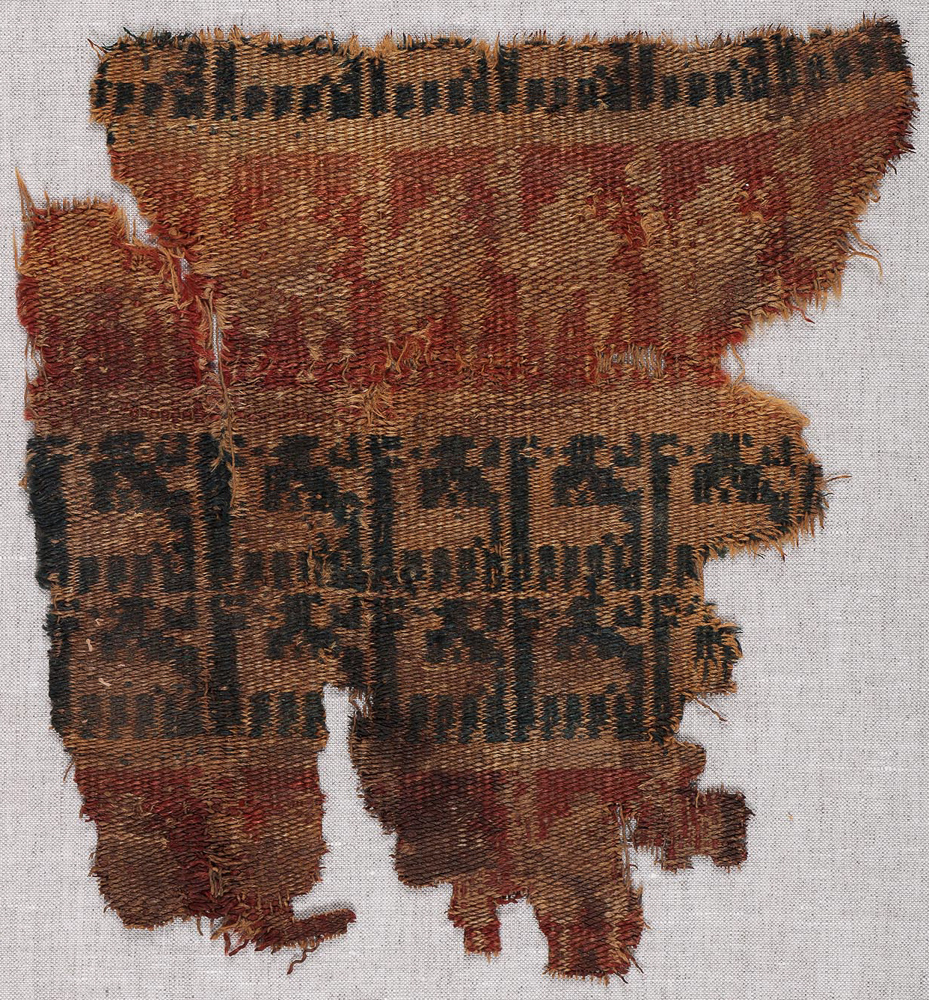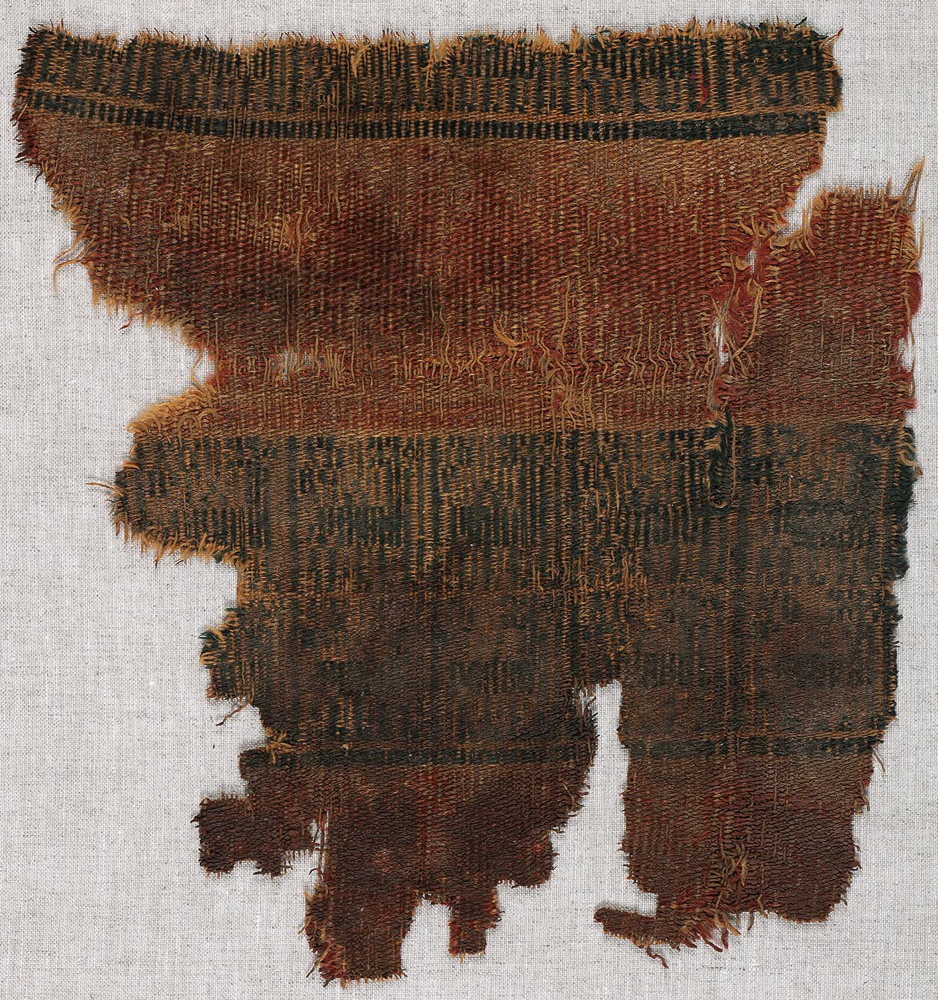This fragment, woven using the compound technique, has four design sections. The first and third have two identical rows of geometricized, four-legged creatures (deer?) in ecru on a dark blue ground. The second and fourth sections, also identical, have a single row of stylised dromedaries in ecru on a bright red ground. The compound technique enabled double-faced textiles to be created, much appreciated for furnishing fabrics such as hangings, and used for decorating, as well as delimiting, interior spaces.
Origin:
Egypt
Date:
4th - 7th century
Material:
Wool
Dimensions:
Warp: 25 cm; weft: 24 cm
Comparisons:
Musée de Cluny, inv. Cl. 22479: deers (?).
Provenance:
Collection Coptic textiles Fill-Trevisiol: donation
Location:
Musée royal de Mariemont
Compound technique enabling repeat motifs to be made
II. Taqueté weave
Warp:
main warp: natural-coloured wool Z: 6/cm; binding warp: natural-coloured wool Z: 3/cm; proportion: 2/1
Weft:
lat 1: natural-coloured wool Z: 14/cm; lat 2: natural-coloured, red or blue wool Z: 14/cm; proportion 1/1
Special Techniques: taqueté: the binding warp binds the weft in tabby weave
Special techniques:
taqueté: the binding warp binds the weft in tabby weave


